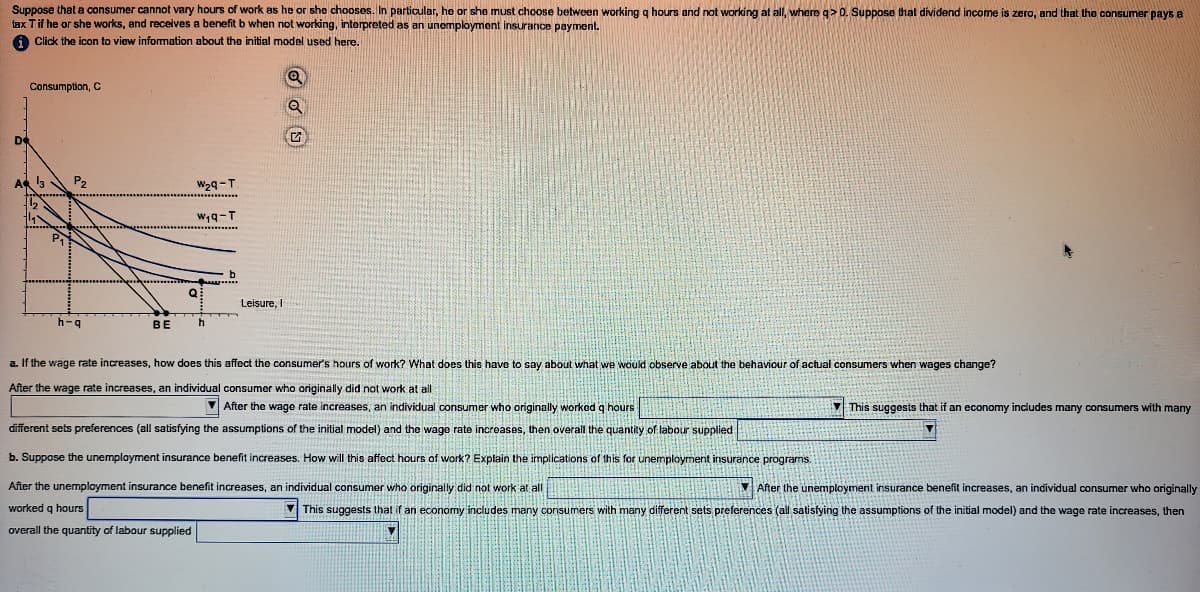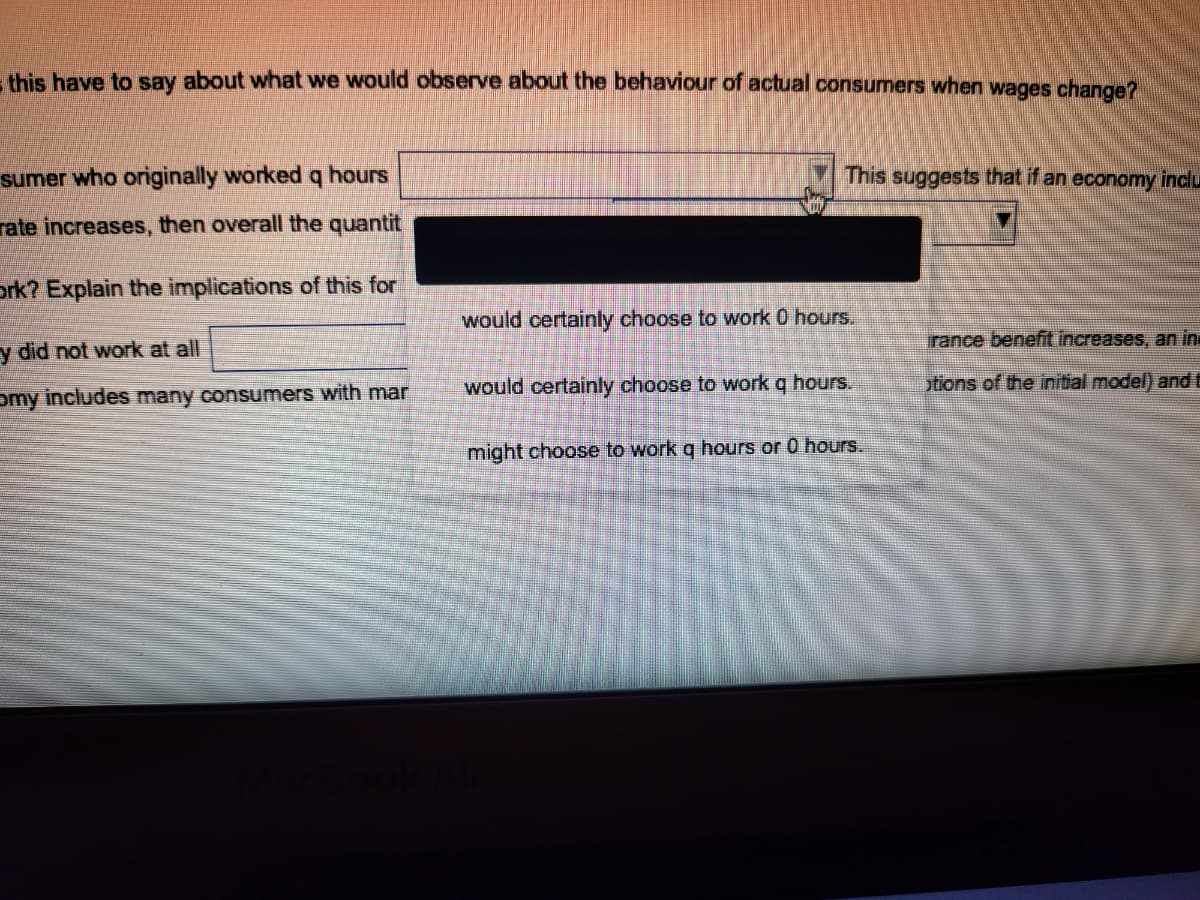the consumer's hours of work? What does this have to say about what we would observe about the behaviour of actual consumers when wages change?
the consumer's hours of work? What does this have to say about what we would observe about the behaviour of actual consumers when wages change?
Brief Principles of Macroeconomics (MindTap Course List)
8th Edition
ISBN:9781337091985
Author:N. Gregory Mankiw
Publisher:N. Gregory Mankiw
Chapter7: Production And Growth
Section: Chapter Questions
Problem 5CQQ
Related questions
Question

Transcribed Image Text:Suppose that a consumer cannot vary hours of work as he or she chooses. In particular, he or she must choose between working g hours and not working at all, whereg> 0. Suppose that dividend income is zero, and that the consumer pays a
tax Tif he or she works, and receives a benefit b when not working, interpreted as an unemployment insurance payment.
a Click the icon to view information about the initial model used here.
Consumption, C
W29-T
w,q-T
Leisure, I
h-g
BE
a. If the wage rate increases, how does this affect the consumer's hours of work? What does this have to say about what we would observe about the behaviour of actual consumers when wages change?
After the wage rate increases, an individual consumer who originally did not work at all
V After the wage rate increases, an individual consumer who originally worked q hours
V This suggests that if an economy includes many consumers with many
different sets preferences (all satisfying the assumptions of the initial model) and the wage rate increases, then overall the quantity of labour supplied
b. Suppose the unemplayment insurance benefit increases. How will this affect hours of work? Explain the implications of this for unemployment insurance programs.
After the unemployment insurance benefit increases, an individual consumer who originally did not work at all
VAfter the unemployment insurance benefit increases, an individual consumer who originally
worked g hours
V This suggests that if an economy includes many consumers with many different sets preferences (all satisfying the assumptions of the initial model) and the wage rate increases, then
overall the quantity of labour supplied

Transcribed Image Text:- this have to say about what we would observe about the behaviour of actual consumers when wages change?
sumer who originally worked q hours
This suggests that if an economy inclu
rate increases, then overall the quantit
ork? Explain the implications of this for
would certainly choose to work 0 hours.
rance benefit increases, an in
y did not work at all
would certainly choose to work q hours.
otions of the initial model) andE
omy includes many consumers with mar
might choose to work q hours or 0 hours.
Expert Solution
This question has been solved!
Explore an expertly crafted, step-by-step solution for a thorough understanding of key concepts.
Step by step
Solved in 2 steps

Knowledge Booster
Learn more about
Need a deep-dive on the concept behind this application? Look no further. Learn more about this topic, economics and related others by exploring similar questions and additional content below.Recommended textbooks for you

Brief Principles of Macroeconomics (MindTap Cours…
Economics
ISBN:
9781337091985
Author:
N. Gregory Mankiw
Publisher:
Cengage Learning

Essentials of Economics (MindTap Course List)
Economics
ISBN:
9781337091992
Author:
N. Gregory Mankiw
Publisher:
Cengage Learning


Brief Principles of Macroeconomics (MindTap Cours…
Economics
ISBN:
9781337091985
Author:
N. Gregory Mankiw
Publisher:
Cengage Learning

Essentials of Economics (MindTap Course List)
Economics
ISBN:
9781337091992
Author:
N. Gregory Mankiw
Publisher:
Cengage Learning


Principles of Economics 2e
Economics
ISBN:
9781947172364
Author:
Steven A. Greenlaw; David Shapiro
Publisher:
OpenStax